The muffler and the catalytic converter are located in your car’s exhaust pipe. So, it is easy to confuse them with one another. In this article, I will discuss muffler vs. catalytic converter – what is the difference?
The primary difference between the muffler and the catalytic converter is that the muffler is used to reduce the loud noise coming from the engine. In contrast, the catalytic converter reduces the toxic gases that come from the exhaust.
Both of them are part of the exhaust system of your car. As such, they are both located in the exhaust pipe. That’s about the only thing that they share. If you understand their many differences, you won’t confuse one with the other.
Read on to learn more about mufflers and catalytic converters, their functions, and their differences.
Muffler Vs. Catalytic Converter
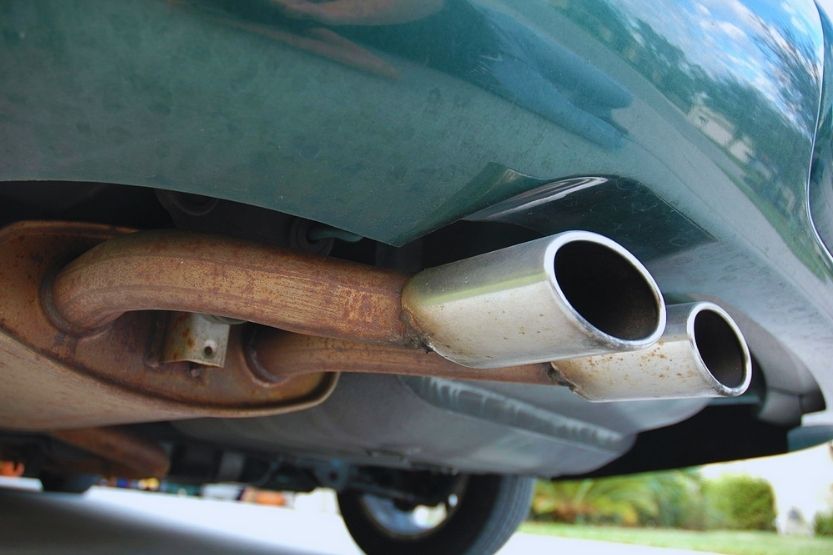
What’s the difference between a muffler and a catalytic converter? The key difference between the muffler and the catalytic converter is their functions.
Muffler Reduces the Sound from the Engine
A muffler is used to reduce or deaden the sound coming from the engine, while a catalytic converter reduces the harmful gases that come from the exhaust.
Some people are confused about which because both are part of a vehicle’s exhaust system, and both are located in the exhaust pipe. But that’s about their only similarity. If you understand their many differences, you will be able to distinguish one from the other.
Both Play Essential Roles in the Car’s Efficient Operation
Both muffler and catalytic converter play essential roles in the efficient operation of your car. While this catalytic converter muffler combo is associated with your car’s exhaust system, their primary roles are very different from each other.
Catalytic Converter Reduces Toxic Gases
It will help if you will never forget that the muffler is for silencing the sound, primarily affecting hearing. The catalytic converter reduces toxic gases, affecting our smell or breathing. Hearing and breathing are two very different biological functions of living beings.
What Is a Muffler and What Does It Do?
Part of the Car’s Exhaust System
To help you differentiate the muffler from the catalytic converter, you must understand its reason for being. The muffler is a part of the car’s exhaust system.
Absorbs the Sound Waves from the Exhaust
Its main function is to reduce or deaden the noise coming from the engine. The muffler reduces the noise by absorbing the sound waves of the exhaust.
Has a Chamber with Walls Made Out of Baffles and Metal Tubes
If you look at the construction of a muffler, you will see how it deadens the noise from the engine. Exhaust gases are channeled into the muffler from a perforated pipe. The muffler has a chamber with walls made out of baffles and metal tubes.
These baffles are arranged so that the sound waves will cancel each other due to destructive interference. They are designed to absorb the sound energy and prevent it from coming out of the exhaust pipe.
Without the Muffler, You’ll Hear a Deafening Noise from the Exhaust
If there’s no muffler in your exhaust pipe, you won’t be able to stand the loud noise coming from the engine. This noise is deafening to the ears. The muffler can deaden this noise with its perforated or baffled tubes inside its resonant housing.
What Is a Catalytic Converter and What Is Its Purpose?
Reduction of Harmful Gases from the Exhaust System
The primary function of the catalytic converter is to reduce the toxic gases coming out from the exhaust system of the engine before they are released into the atmosphere. It is specially designed and constructed of parts and materials that enable it to fulfill its role.
Has a Honeycomb Structure
A catalytic converter has a honeycomb structure, typically a ceramic matrix. Exhaust gases are channeled through the structure’s pores.
Uses a Ceramic Matrix
A typical cat converter uses a ceramic matrix. This matrix is usually coated with trace amounts of rare metals such as rhodium, palladium, or platinum. These metals are used as catalysts. They induce a chemical reaction without being part of the reaction because they remain unchanged.
With this type of construction and rare-earth metals as a catalyst, the cat converter can reduce harmful exhaust gases before releasing them into the atmosphere.
Heat Burns the Unburned Fuel from the Engine
While you are driving your car, this cat converter gets so hot. Since its insides are extremely hot, the extreme heat burns the unburned fuel coming from the engine’s exhaust and other exhaust particles.
Converts Carbon Monoxide Into Gases Like Water Vapor and Carbon Dioxide
That’s basically how the cat converter reduces the toxic gases that can harm our environment. It is also called a converter because it converts carbon monoxide into gases like water vapor and carbon dioxide.
Reduces the Amount of Heavy Metals in the Fuel
The fuel inside your tank contains heavy metals like mercury, lead, nickel, etc. Another function of the cat converter is to reduce the amount of these heavy metals in the fuel you pour into your tank.
Differences Between a Muffler and a Catalytic Converter

Now that you know the roles played by the muffler and the catalytic converter in a vehicle’s exhaust system, you will be able to understand their differences.
These two exhaust system components have many differences, and we will discuss them one by one:
1. Function
The function of the muffler is to reduce or deaden the sound produced by the engine, while the role of the cat converter is to transform harmful gases from the exhaust into harmless emissions that won’t hurt the environment.
So, the muffler attenuates the loud sound of the engine while the catalytic converter treats the unburned gases coming from the engine exhaust. You will always find both mufflers and cat converters in all modern vehicles.
2. Operating Principle
The operating principle of a muffler is very different from the operating principle of a cat converter. That’s basically because they perform different functions. In a muffler, the sound waves are canceled out by the destructive interference caused by the baffles.
On the other hand, the cat converter takes advantage of the reduction and oxidation reactions to convert harmful gases into harmless emissions.
3. Process
Muffler: Destructive Interference
The work done by a muffler is based on the physical process of destructive interference. This type of interference happens when the maxima of two waves are out of phase by 180°.
That means one wave’s negative displacement cancels the positive displacement of the other wave. The resulting amplitude (or sound volume) of the wave produced is zero.
Cat Converter: Chemical Process
The work done by the cat converter is through a simple chemical process. The process includes the reduction of chemical reactions and oxidation. Inside a cat converter, the basic reaction occurs at around 600°C.
In this condition, unburned hydrocarbons in the fuel react with the oxygen molecules. What is created due to this reaction are water and carbon dioxide.
4. Material
A typical muffler contains cast iron, aluminized steel, and commonly available metals. Most cat converters are constructed of rare earth metals such as rhodium, platinum, or palladium.
5. Construction
A Muffler Has Perforated Baffles and Tubes
A typical muffler is constructed of perforated baffles and tubes. At the same time, a cat converter is made up of a honeycomb structure covered or plated with rare earth metals like palladium, rhodium, or platinum.
Cat Converter’s Honeycomb Structure
The exhaust gasses are channeled through the baffles and perforated tubes in a muffler to decrease the noise. With the cat converter, the exhaust gas is channeled through the tiny pores of the honeycomb structure.
Again, what is the difference between a muffler vs. a catalytic converter? The muffler and catalytic converter’s difference is in their purpose. The catalytic converter helps reduce toxic gases from the car’s exhaust. Meanwhile, the muffler reduces the sound from the engine.
6. Cost
Mufflers, in general, cost less than cat converters. Because of their materials and their type of construction, cat converters tend to be more expensive than mufflers.
7. Lifespan
On average, the lifespan of a muffler ranges from 4 to 5 years. If you are always driving in normal conditions, you can expect your brand new muffler to serve you for the next 50,000 to 80,000 miles.
The lifespan of a cat converter depends on how and where it is used. If it is made good construction in normal driving conditions, a cat converter can last from 5 to 10 years.
Some even say it can last up to 20 years if used in ideal conditions. You should check its conditions after using it for around 50,000 miles.
8. Location
Mufflers are generally situated at the end of the exhaust system or the exhaust pipe. Cat converters are typically installed between the engine and the muffler.
9. Modification
Mufflers can be made in different shapes and sizes, although oblong is its typical shape. It depends on the whims of the vehicle owner and the vehicle’s requirements.
Cat converters, in general, cannot be modified. The original cat converter, if damaged, should be replaced by the same type of cat converter that the car came with.
10. Symptoms of Failure
It is easier to tell if a muffler is failing. The sound from the engine will be noisier than before. The fuel economy will also suffer. You will know if the cat converter is going bad if the engine is misfiring and makes rattling noises.
Causes of Failure
Mufflers will start to fail if moisture accumulates in their inside parts. Rust will develop, which will weaken the shell. Cat converters fail because of contamination, choking, or overheating.
Frequently Asked Questions
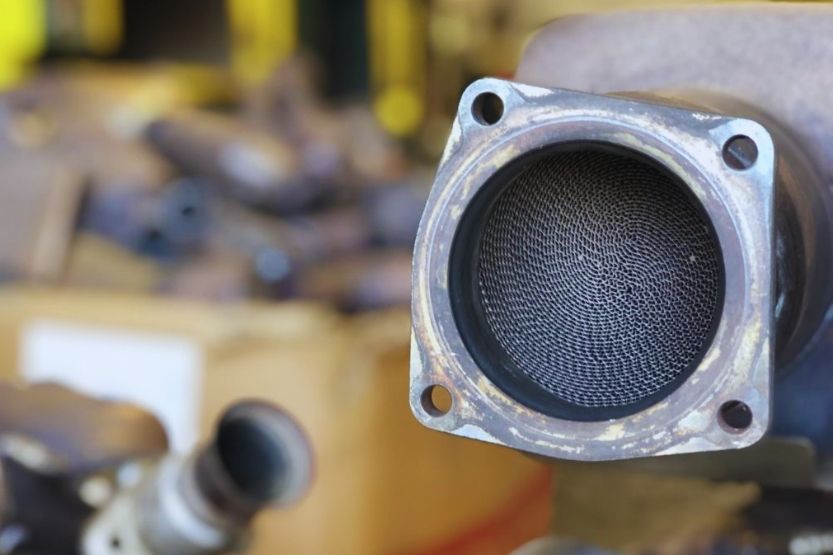
Here are some of the answers to the often asked questions about mufflers and cat converters. Reading these answers will help you remember the points I have given you in this article:
Is the Muffler Different from the Catalytic Converter?
Yes, the muffler is a different part of your car than the catalytic converter. While they are both parts of your car’s exhaust system, they perform different functions.
What Is the Difference Between a Muffler and a Cat Converter?
The basic difference between these two is one is concerned about the noise, while the other is concerned about poisonous gasses.
A muffler treats the loud noise produced by the engine when it is running. It reduces the noise by acting as a sound silencer. On the other hand, the cat converter reduces the toxic gasses emitted by the exhaust.
It converts these harmful gasses to less harmful emissions like carbon dioxide and water so they can be safely released into the atmosphere.
Which Is More Expensive Between the Muffler and Catalytic Converter?
Cat converters are more expensive than mufflers. They are made of honeycomb structures plated or covered with rare earth metals like palladium, rhodium, or platinum. Mufflers are only made of stainless steel, aluminized steel, cast iron, etc.
How Long Does a Muffler Last?
A typical muffler, used in normal driving conditions, can last from 4 to 5 years. So, you can expect your brand new muffler to serve you well for the next 50,000 to 80,000 miles.
How Many Years Can a Cat Converter Last?
The lifespan of a cat converter can range from 5 to 10 years in normal driving conditions. But you need to check its health once it reaches the 50,000-mile mark.
If I Remove the Cat Converter, Will It Make the Exhaust Sound Louder?
Yes, the cat converter can make the exhaust sound louder. However, the suppressed sound is very negligible. It will be challenging for you to tell the difference.
Does the Law Prohibit the Removal of Muffler or Cat Converter?
You cannot remove the cat converter or the muffler from your exhaust system. These two components are vital to the ability of your car to operate within the regulatory limits prescribed by the government regarding noise and environmental pollution.
You are allowed to remove them whenever they are damaged or malfunctioning, and you need to replace them.
In Closing: Differences Between Muffler Vs. Catalytic Converter
The key difference between the muffler and the catalytic converter is their role in your car. A muffler’s role is to deaden the sound coming from the engine, while the function of the catalytic converter is to reduce the harmful gases that come from the exhaust.
Many people are confused about which because they are both parts of a vehicle’s exhaust system. But that’s their only similarity. If you know their many differences, you will be able to tell one from the other.
Read next:
What Causes a Catalytic Converter to Go Bad?


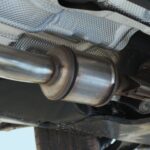
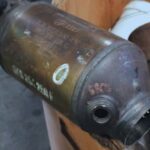

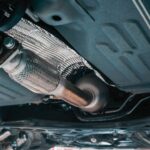

![Read more about the article Service Stability System [Causes and How to Fix this Warning Light]](https://roadsumo.com/wp-content/uploads/2022/04/service-stability-system-300x200.jpg)

![Read more about the article Check Engine Light on After Oil Change [Causes and Solutions]](https://roadsumo.com/wp-content/uploads/2021/10/check-engine-light-on-after-oil-change-300x200.jpg)